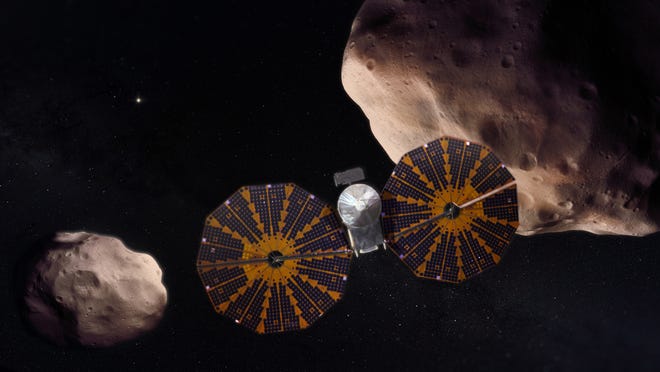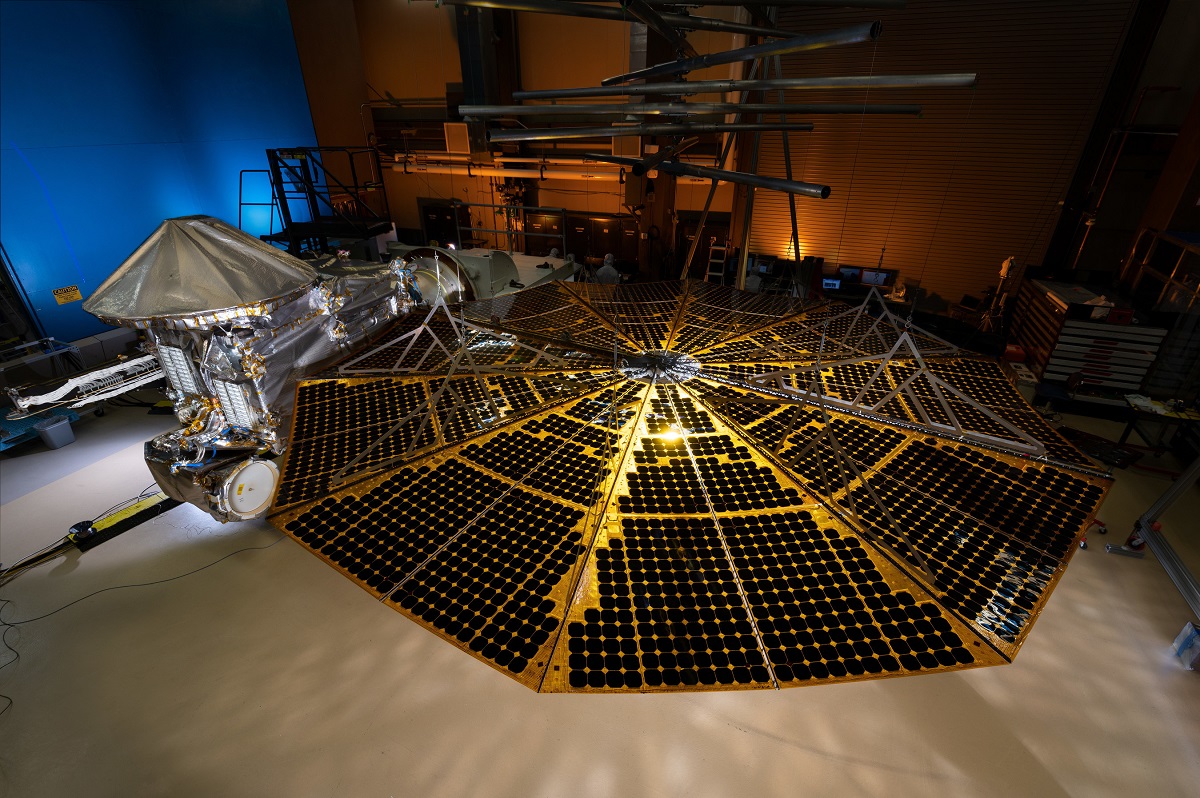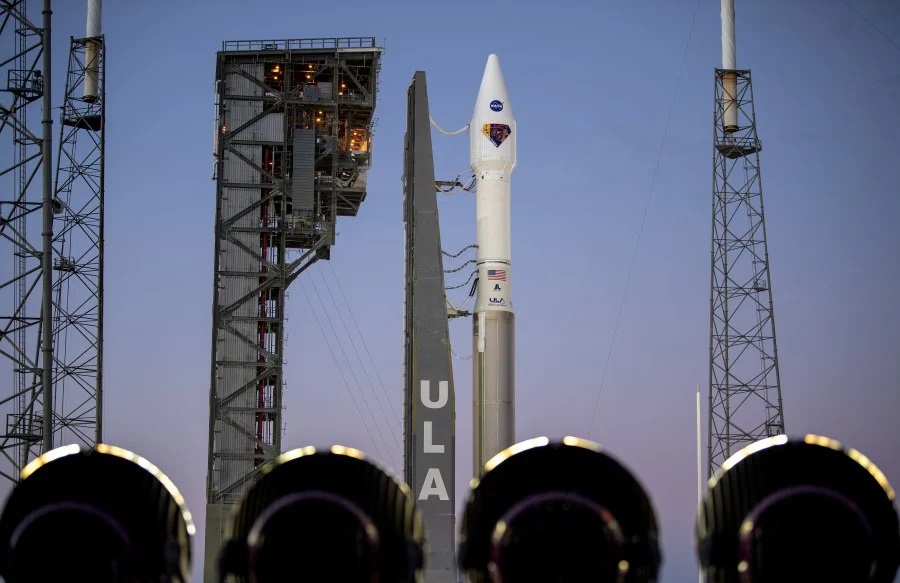NASA's spacecraft 'Lucy' begins its journey to the Trojan Asteroids of Jupiter

NASA successfully launched its newest spacecraft “Lucy” at 5:34 a.m. ET on October 16, 2021, from Cape Canaveral Space Force Station in Florida. The United Launch Alliance (ULA) Atlas V rocket boosted the 3,300-pound probe during the mission launch.
NASA's planetary science mission, Lucy, is an asteroid-observing probe. The spacecraft was designed, built, and tested in Lockheed Martin’s Littleton facility. Lockheed Martin’s mission operations team would remain in communications with the spacecraft and will operate it through the end of its mission.
The Lucy probe will help unlock new knowledge about the formation of our solar system. The name of the probe was inspired by the 3.2-million-year-old Lucy skeleton, that fundamentally changed our understanding of human evolution. Similarly, NASA’s Lucy mission seeks to increase our knowledge of the formation of planets, including Earth.
NASA's newest spacecraft costs nearly $1 billion. The Lucy probe, which is equipped with advanced scientific instruments and cameras, will explore the Trojan asteroids of Jupiter, that are believed to be “fossils of planet formation”. The mission will uncover one of the solar system's greatest mysteries, and help answer the question of “how did the giant planets form?”.
Lucy's engineers designed the spacecraft for a long odyssey through space, and “ready for anything”. The probe’s design is similar to the previous spaceships built by Lockheed Martin, like MAVEN and OSIRIS-REx.
 An artist's concept of the Lucy Mission (Image Credit: Goddard Media Studios)
An artist's concept of the Lucy Mission (Image Credit: Goddard Media Studios)
Key features of the Lucy spacecraft:
• About 430 unique components, brought together by more than 2 miles of wire, 170 square feet of composite structure, and more than 12,800 electrical connections, were used to build the spacecraft.
• Two 24-foot diameter solar arrays, when unfurled covering more than a four-story building, were used in the spacecraft. The solar arrays were built by Northrop Grumman.
• Lucy contains an autonomous software that enables the spacecraft to track asteroid targets as it flies by at an average speed of 15,000 mph (24,140 kph).
• A robust thermal design has been used in the spacecraft, that protects it from extreme space temperatures ranging from -250⁰F to +300⁰F (-156 °C to +148 °C).
• The probe contains three primary instruments to study the composition, geology, and structure of the Trojan asteroids of the Jupiter.
• 3D-printed brackets, harness clamps, and other advanced production parts made from three different materials were used in Lucy.
• Latest digital engineering techniques and collaborative tools, such as remote collaboration, digital test review capability, and automated testing, were used to build Lucy. The digital engineering techniques assisted the team to meet the production deadline throughout the COVID-19 pandemic.
 Lucy Probe in Cleam Room (Image Credit: Lockheed Martin)
Lucy Probe in Cleam Room (Image Credit: Lockheed Martin)
Lucy will carry advanced versions of three heritage instruments:
L’Ralph: The camera contains two instruments: a color visible imager (Multispectral Visible Imaging Camera), and an infrared spectrometer (Linear Etalon Imaging Spectral Array). L’Ralph is capable of taking pictures of the Trojan asteroids. These images will help scientists determine what the Trojans’ surfaces are made of as they look for the presence of things like ice, hydrated minerals, and other organic materials.
L’LORRI: The Long Range Reconnaissance Imager functions like the Hubble Space Telescope, this telescopic camera will take black and white images of the Trojans from afar and produce incredibly detailed, high-resolution visuals of things like craters on their surfaces. L’LORRI will also help Lucy orient itself and navigate through space.
L’TES: Thermal Emission Spectrometer or TES serves as the world’s most sophisticated thermometer. The instrument will measure the infrared energy emitted by the asteroids as the sun warms them and detect unique spectral signatures of individual minerals and other surface properties of the Trojan asteroids.
The probe will reach the Trojans in 2025, and would visit more asteroids than any other previous mission. The spacecraft is capable of rapidly gathering data as it flies by the asteroids.
 NASA spacecraft Lucy, moments before launch from Cape Canaveral Space Force Station in Florida.
NASA spacecraft Lucy, moments before launch from Cape Canaveral Space Force Station in Florida.
Lockheed Martin Lucy Program Manager Rich Lipe said, “Seeing Lucy start her journey reinforces the strength of the 500 team members from NASA, Lockheed Martin, the Southwest Research Institute, and many other teams who worked together to bring this mission to life."
Rich Lipe added, "It's a tale centered on flexibility, collaboration and ingenuity, which is fitting for the voyage that lies ahead for this advanced spacecraft."
“Lucy will be the farthest solar-powered mission from the Sun and will visit a record-breaking number of asteroids – all in the name of studying them for clues about our own origins”, Lockheed Martin’s official news release said.
According to Lockheed Martin news release, “Lucy's 4-billion-mile odyssey through the solar system will last 12 years and fly by eight objects: one Main Belt asteroid and seven Trojan asteroids that lead and trail Jupiter in its orbit.”
The Trojans are believed to be cosmic fossils, like time capsules from the solar system formation, and are most likely made from the same materials as some of the outer planets.
“Scientists are keen for an up-close look at these ancient rocks, which are believed to be pristinely preserved leftovers from the formation of our outer solar system 4 billion years ago,” the statement added. The Trojan asteroids leading and trailing Jupiter are very early remnants from the creation of our solar system that were scattered and later captured in Jupiter’s orbit.
Lucy Deputy Principal Investigator at the Southwest Research Institute, Cathy Olkin stated during a prelaunch science briefing on October 14, “One task is to map the craters across each asteroid's surface… We're going to look for craters smaller than a football field, about 70 yards across, for craters as large as four miles, and everything in between.”
According to Cathy Olkin, “the size and number of craters on an asteroid's surface can tell us a lot about its age, which in turn, can reveal clues about an asteroid's origin and evolution.”
Lockheed Martin’s mission architect Brian Sutter told Florida Today that, “Lucy is an absolutely beautiful spacecraft that's going to be able to fly out past Jupiter's orbit and visit all these incredible Trojan asteroids”. Sutter also laid out which asteroids “Lucy could fly by in the most efficient ways possible”.
Dr. Donald Johanson, who in 1974 discovered the 3.2-million-year-old skeleton, Lucy, said that he is “thrilled to see the spirit of scientific exploration live on through the Lucy mission”. Dr. Johanson remarked, “The mission teaches us something about the interconnectedness of people over time and space… A poignant moment in the history of humanity that brings the past and the present together – and launches us into the future.”
Lucy Mission is operated by Lockheed Martin Space from its Littleton, Colorado, facility, while NASA's Goddard Space Flight Center in Greenbelt, Maryland, provides overall mission management, systems engineering, safety and mission assurance. Marshall Space Flight Center in Huntsville, Alabama, oversees the Discovery Program for the agency's Science Mission Directorate in Washington, D.C., and NASA Goddard, Arizona State University and Johns Hopkins Applied Physics Laboratory contributed the instruments. The Southwest Research Institute’s Colorado branch is the principal investigator institution of the mission.
Lucy mission marked the 100th launch from the United Launch Alliance's launch facilities, the 146th Atlas V mission, and the 89th for NASA. The ULA is about to retire its Atlas V rocket and replace it with Vulcan rocket in 2022.
Sources: Lockheed Martin, Space.com, Florida Today, New Straits Times, Forbes.
















